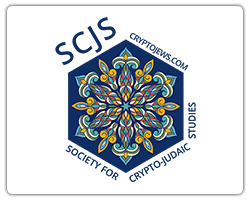I enjoyed reading Judith Gale Krieger’s article title “Pablo de Santa Maria ’The Purim Letter’ and ’Siete edades del Mundo’” (Halapid Spring 1998) I was impressed especially by how she contrasted the rich and lively quality of his “Purim Letter” which he composed while he was Rabbi Solomon Halevy to the dry and detached impression he conveyed when he authored “Siete edades” as Bishop Pablo de Santa Maria
Another presentation of this enigmatic personality that attracted my interest was made by B Netanyahu in his The Origins of the Inquisition in Fifteenth Century In 15th Century Spain
On pages 168171 Netanyahu opens by pointing out how Maimonides’ interpretation of Judaism in terms of Aristotelian philosophy enabled his disciples to find a common meeting ground with the Christian scholastics1 who were inclined to interpret Christian dogma from an Aristotelian perspective as well He says that tradition has it that Paul2 the Christianized Solomon Halevy “became infatuated ith the works of Thomas Aquinas”3
Netanyahu states that in the frequent Christian Jewish theological disputations that took place in the second half of the 14th century in Spain Paul was counted among defenders of Judaism
From here Netanyahu begins to speculate that being the chief Rabbi of the great community of Burgos did not satisfy his ambitions that Halevy aspired to be a courtier Indeed as pointed out in Krieger’s article he was appointed to a diplomatic mission to England by the King of Castille
Halevy Netanyahu surmises must have been attracted to the lifestyle of Christian aristocracy At the same time questions and doubts that he experienced during his preparatory investigations for the religious debates may have gradually inclined him toward skepticism a not infrequent pitfall for an intellectual at that time who tried to accommodate religion with rationalism
Massacres Influenced Conversion
Netanyahu posits that at this point in Halevy’s life he was no longer ready to take risks for his Jewishness or for Judaism He assumes that the chief Rabbi of Burgos was aware of the massacres of 1391(4) soon after they began; and it was at this point that he opted to convert to Christianity
The Regency which ruled Castille at that time had alerted Buegensian authorities against the onslaught of a similar massacre in their city The chief Rabbi was probably duly informed of the dire situation facing his community and concluded that no credible countermeasure could prevent it
Netanyahu proposes that had his decision to convert been based on this hopeless situation his submission to baptism might still be somewhat construed as having been compelled However the author cites “subsequent sources” in which the apostate presented his conversion to Christianity as a deliberate and intentional consequence of religious conviction
Netanyahu then presents a probable scenario in which as chief Rabbi Halevy lays before the prominent members of the community the grim facts of their situation and its hopelessness emphasizing the uselessness of resistance to the conversionist wave already overwhelming other Jewish communities in Castille The author then goes on to suggest that the notables hardly shared his solution to the dilemma rather rejecting it with anger and revulsion and branding him an unconscionable traitor
Netanyahu concludes this theoretical train of events by proposing it was this outcome of bitter acrimony between him and his community that laid the foundation of his animosity towards the Jews who held steadfast in their faith which abounds in his later writings
Netanyahu’s comparison of Halevy/Santa Maria’s earlier literary works in Hebrew with his later ones in Latin differ with Krieger’s He writes “It is noteworthy that compared to his Latin and Castillian works which are notable for their fluency and clarity his two extant Hebrew pieces are written in a cumbersome profuse and unnatural style” One of the sources he cites is an article by I Abrahams ’4Paul of Burgos in London”5 I could not find anything in this article that would support Netanyahu’s opinion On the contrary the writer’s statement that “the letter (ie the Purim Letter) is moreover of distinct literary merit” is more in line with Krieger’s assessment
NOTES:
- Scholasticism: a philosophical movement dominant in western Christian civilization from the ninth until the seventeenth century and combining religious dogma with the mystical and intuitional tradition of patristic (iechurch fathers: Augustine Jerome etc) philosophy especially of Augustine and later with Aristotalianism(Webster)
- Netanyahu seems to prefer to refer to his subject as “Paul” even before the latter acquired this name after his conversion
- Thomas Aquinas was one of the most prominent expounders of scholasticism
- The massacres of 1391 took place during a period when Castille was being ruled by a Regency Council presided over by the Queen Mother and composed largely of fractious factions of nobility and high clergy an opportune situation for lawlessness
- Jewish Quarterly Review Vol XII 1900 pages 255263
ARYE HAZARY is a frequent contributor to Halapid He lives in Israel



